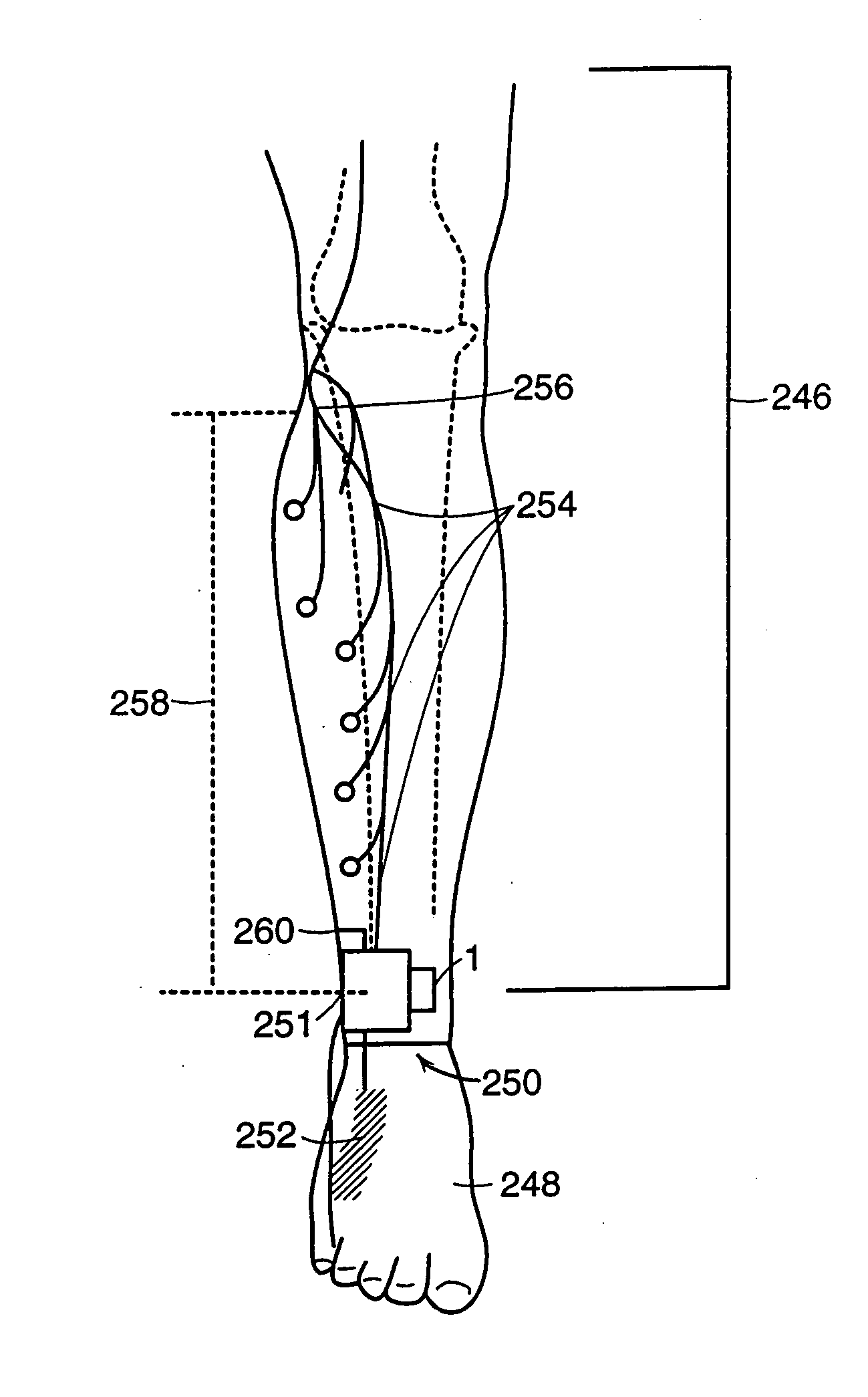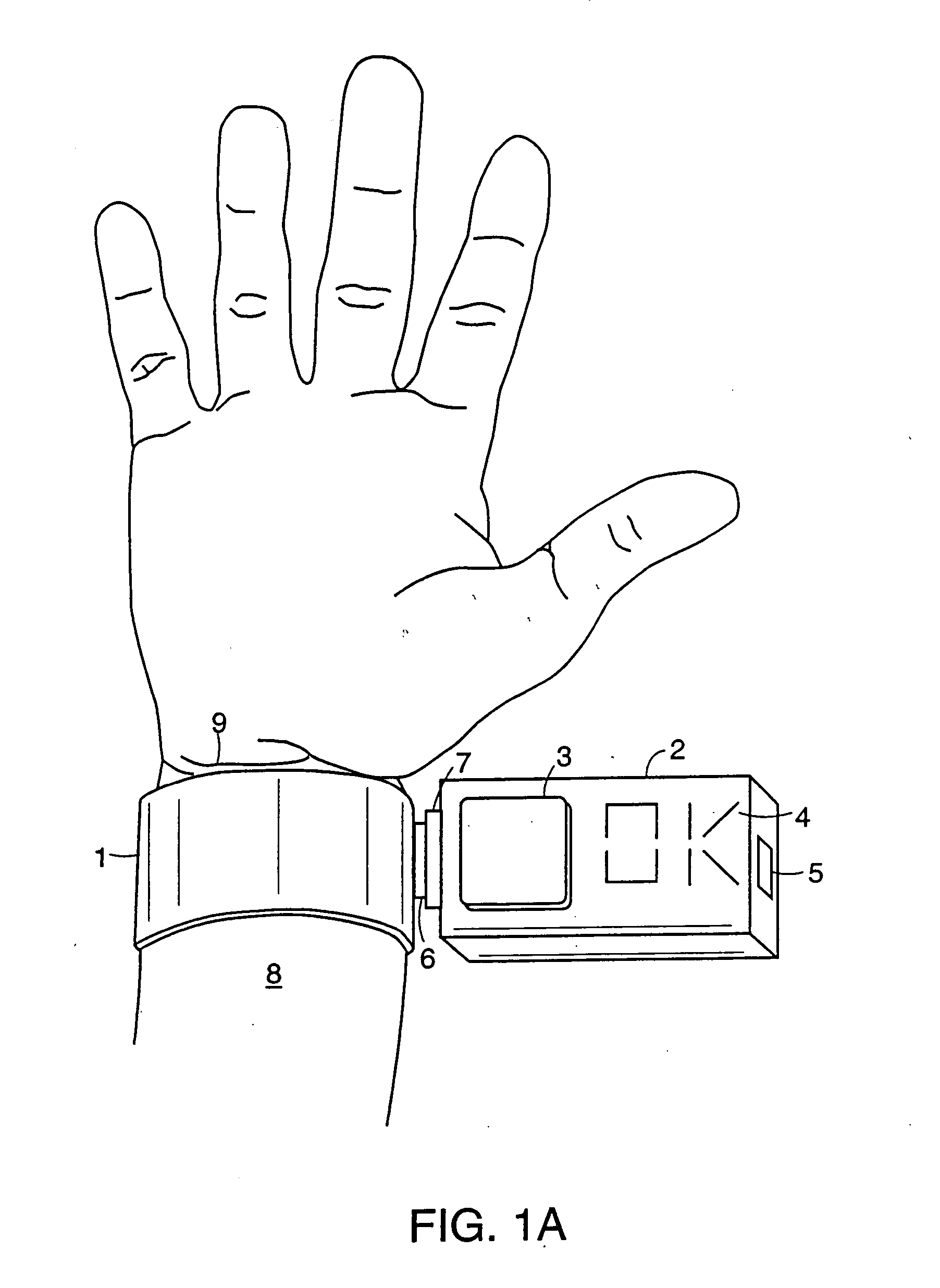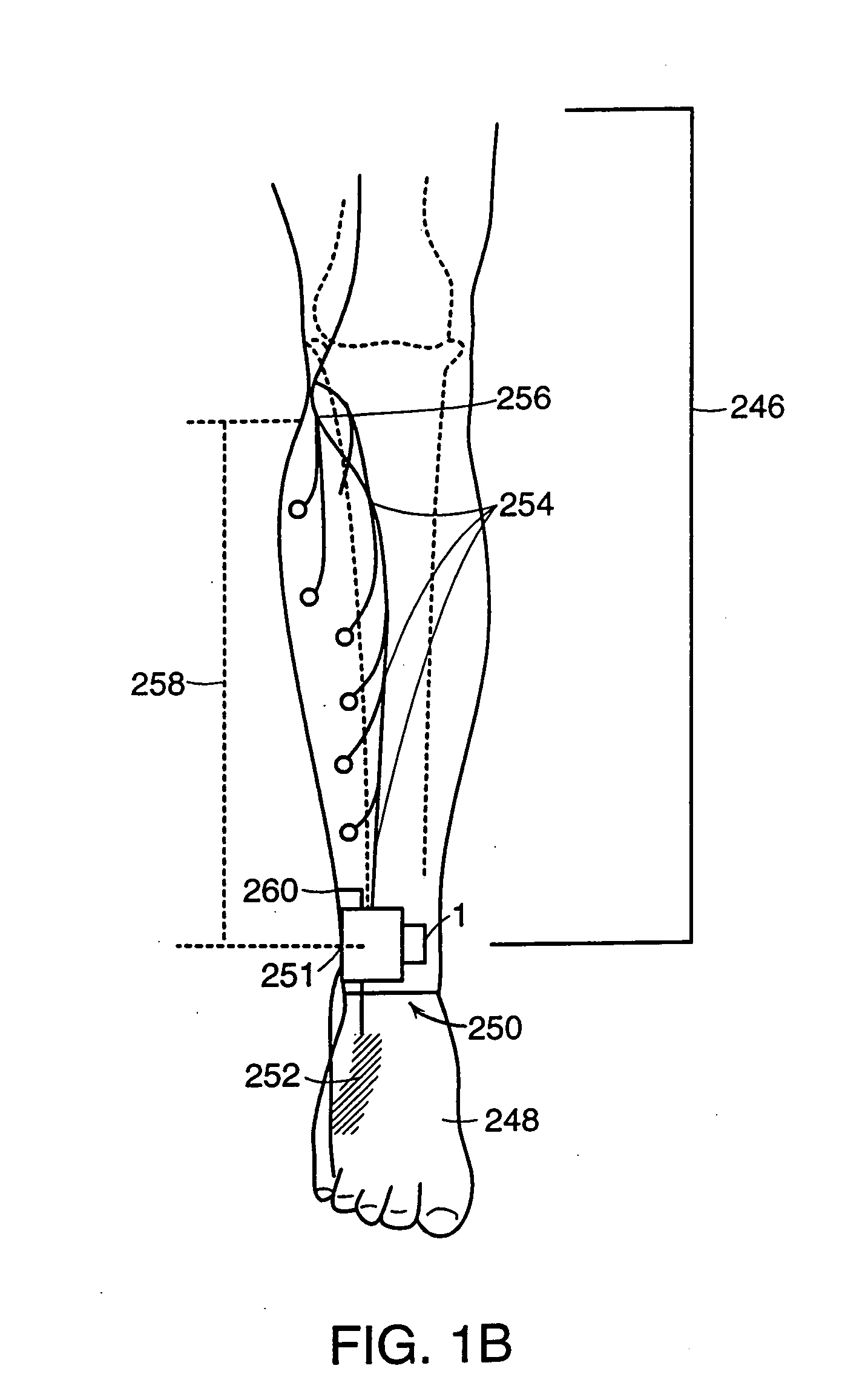Methods for the assessment of neuromuscular function by F-wave latency
a neuromuscular function and f-wave latency technology, applied in the field of apparatus and methods for assessing neuromuscular function, can solve the problems of abnormally high delay between and impaired neuromuscular function, and achieve the effect of less costly and automatic assessment of neuromuscular function
- Summary
- Abstract
- Description
- Claims
- Application Information
AI Technical Summary
Benefits of technology
Problems solved by technology
Method used
Image
Examples
Embodiment Construction
[0044] The present invention offers a detection and monitoring system for peripheral neurological conditions, such as Carpal Tunnel Syndrome, diabetic neuropathy, and toxic neuropathies, that is less time consuming, less expensive, and more available to a wider range of the general public than existing systems. One of the most effective ways to detect peripheral neuropathies is to monitor the response of a motor nerve to stimulation.
[0045] A motor nerve response signal typically consists of two components, namely the M-wave component and the F-wave component The M-wave component is generally quantified by the distal motor latency (DML). The DML is generally defined as the amount of time that elapses between the start of the stimulus (ie., time=0) and the initial negative deflection of the M-wave component of the muscle response signal (ie., myoelectric potential). The F-wave component of the muscle response signal, on the other hand, is typically quantified by the minimum or median...
PUM
 Login to View More
Login to View More Abstract
Description
Claims
Application Information
 Login to View More
Login to View More - R&D
- Intellectual Property
- Life Sciences
- Materials
- Tech Scout
- Unparalleled Data Quality
- Higher Quality Content
- 60% Fewer Hallucinations
Browse by: Latest US Patents, China's latest patents, Technical Efficacy Thesaurus, Application Domain, Technology Topic, Popular Technical Reports.
© 2025 PatSnap. All rights reserved.Legal|Privacy policy|Modern Slavery Act Transparency Statement|Sitemap|About US| Contact US: help@patsnap.com



